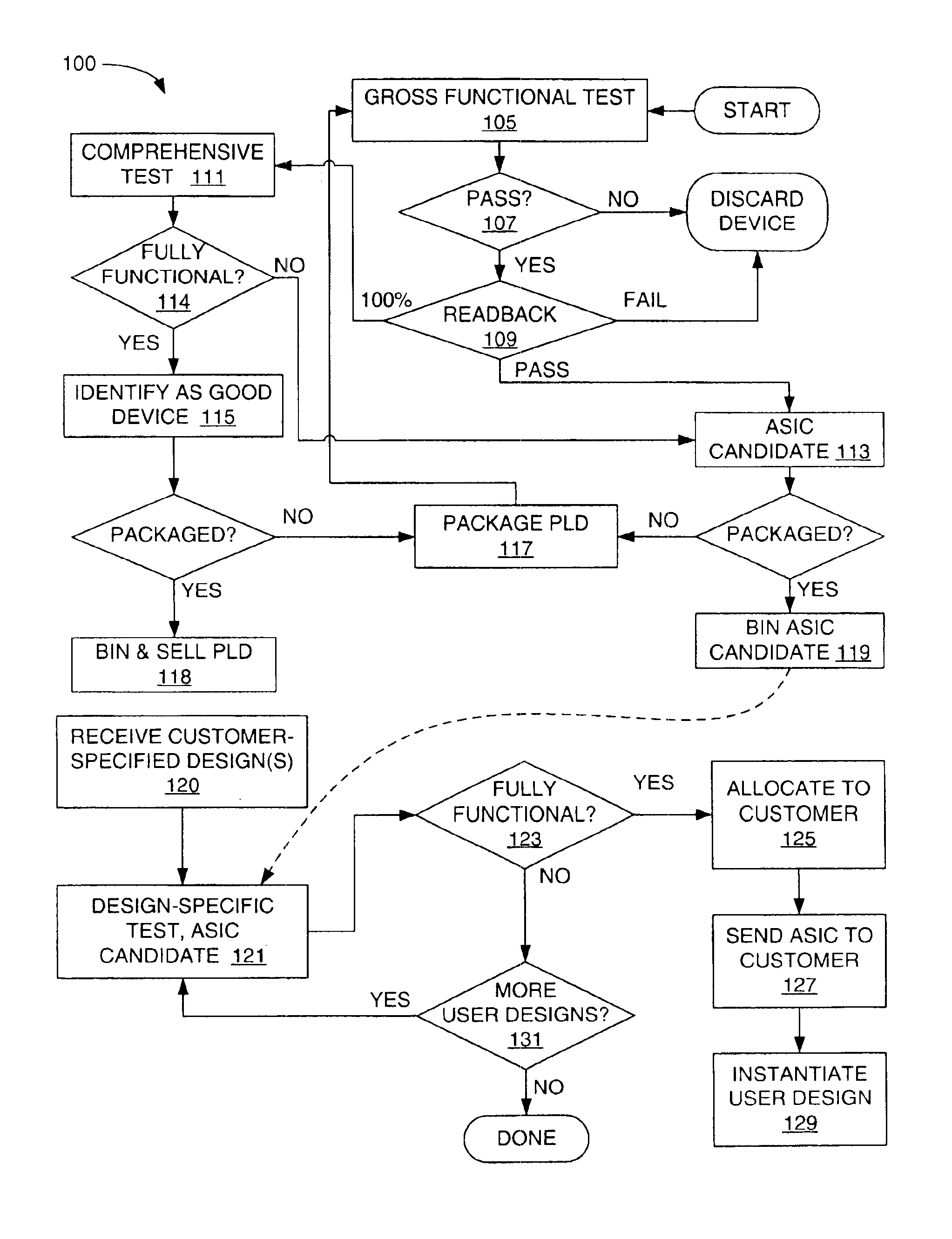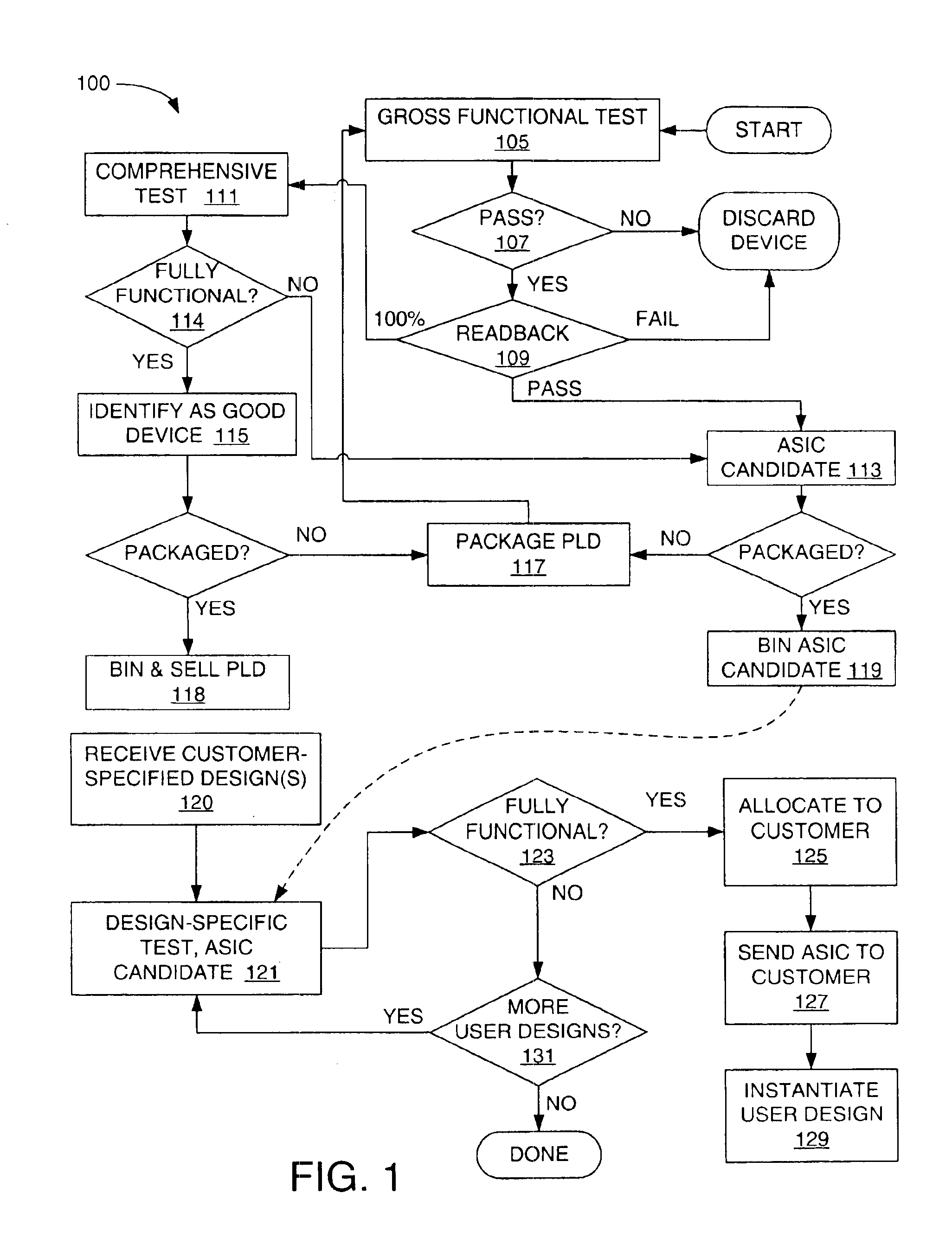Application-specific testing methods for programmable logic devices
a programmable logic and application-specific testing technology, applied in the field of programmable logic devices, can solve the problems of increasing the cost of already expensive plds, reducing the probability of finding defects on a given chip, and achieving the effect of avoiding defects
- Summary
- Abstract
- Description
- Claims
- Application Information
AI Technical Summary
Benefits of technology
Problems solved by technology
Method used
Image
Examples
Embodiment Construction
[0037]The present invention relates to programmable logic devices. In the following description, numerous specific details are set forth to provide a more thorough understanding of embodiments of the present invention. However, it will be apparent to one skilled in the art that the present invention may be practiced without these specific details. In other instances, well-known features have not been described in detail in order to avoid obscuring the present invention.
[0038]FIG. 1 is a flow chart 100 showing one embodiment of the present invention as applied to FPGAs. Subsequent to fabrication, the various chips on a given semiconductor wafer are tested for “gross” defects (step 105). For purposes of the present disclosure, “gross” defects are defects that have a high probability of rendering a PLD unfit for any customer purpose. Examples of gross defects include power-supply shorts, opens, excessive leakage, defective clock-management circuitry, and significant numbers of defectiv...
PUM
 Login to View More
Login to View More Abstract
Description
Claims
Application Information
 Login to View More
Login to View More - R&D
- Intellectual Property
- Life Sciences
- Materials
- Tech Scout
- Unparalleled Data Quality
- Higher Quality Content
- 60% Fewer Hallucinations
Browse by: Latest US Patents, China's latest patents, Technical Efficacy Thesaurus, Application Domain, Technology Topic, Popular Technical Reports.
© 2025 PatSnap. All rights reserved.Legal|Privacy policy|Modern Slavery Act Transparency Statement|Sitemap|About US| Contact US: help@patsnap.com



